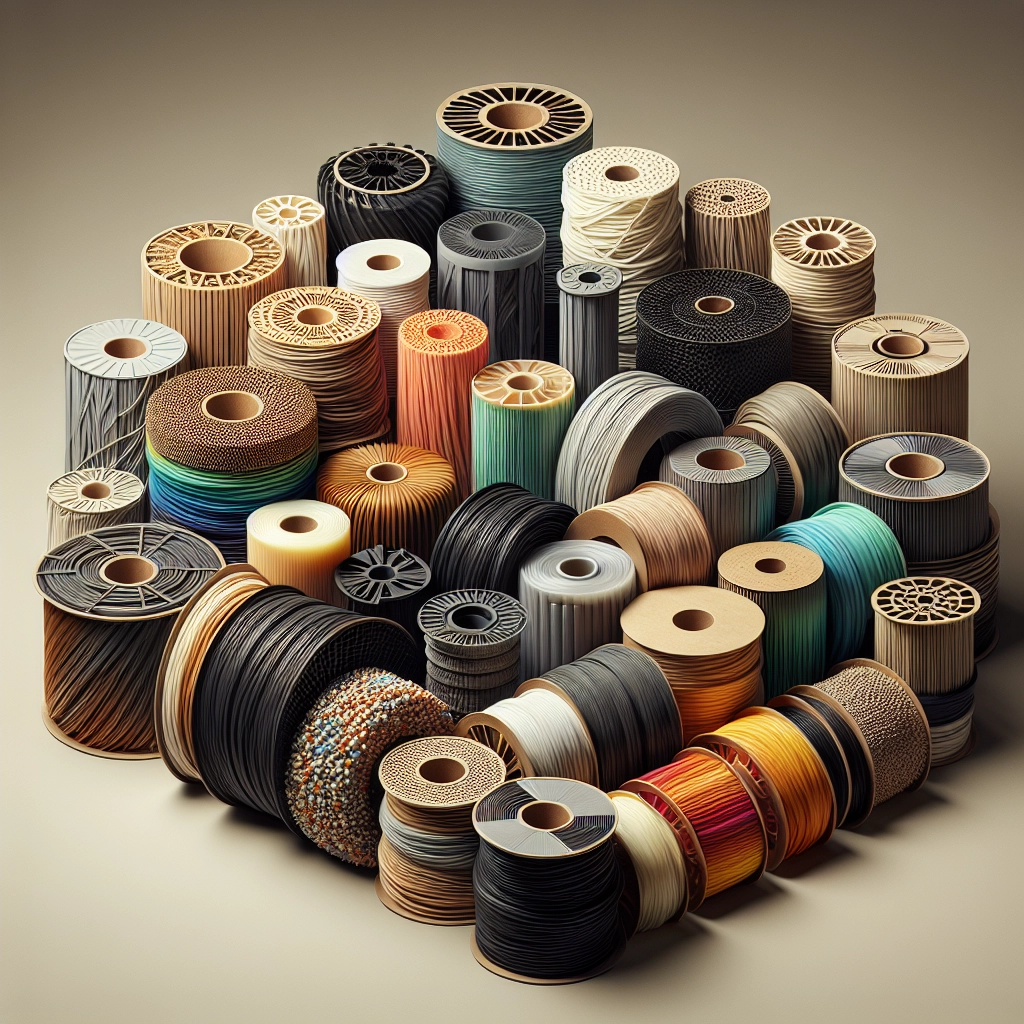Exploring Eco-Friendly 3D Filament Options Available Today
3D printing has revolutionized how we think about manufacturing, prototyping, and creativity. It enables us to turn digital ideas into tangible objects in ways we never thought possible. However, while this technology offers immense potential, it often comes at a cost to our environment. Traditional 3D printing materials like PLA, ABS, and PETG are convenient but can be harmful to the planet. Thankfully, as awareness of sustainability grows, so does the market for eco-friendly 3D filaments. Today, let’s dive into some of these innovative materials that not only contribute to our creative projects but also help protect our planet.
What Makes a Filament Eco-Friendly?
Before we explore specific filament options, it’s important to understand what we mean by “eco-friendly.” Generally, an eco-friendly filament is one that is made from sustainable resources, produces fewer harmful emissions, and has a lower environmental impact throughout its lifecycle—from production to disposal. This includes bioplastics, recycled plastics, and materials derived from renewable resources.
The Rising Star: PLA Filament
While PLA (Polylactic Acid) has been a staple in the 3D printing community for years, it deserves special mention here. Made from fermented plant starch (commonly from corn or sugarcane), PLA is biodegradable and considered one of the best options for environmentally-conscious makers. It emits fewer toxins during printing compared to ABS, and though it needs industrial conditions to break down effectively, its impact is significantly lower as compared to petroleum-based plastics.
Innovative brands are even enhancing PLA by infusing it with natural fibers like hemp or bamboo to create composite filaments that offer unique textures and aesthetics.
The Evolution of PETG
PETG (Polyethylene Terephthalate Glycol) is another popular filament, but not all PETG is created equal. Traditionally derived from fossil fuels, eco-conscious brands are now producing recycled versions of this strong and durable filament. Recycled PETG reduces plastic waste by taking scraps from the production of other products and repurposing them for 3D printing.
This eco-friendly twist on an already-versatile material provides the same great mechanical properties and ease of use as regular PETG, but with a reduced environmental footprint. Plus, the fact that it can be recycled again makes it a product you can feel good about using.
Turning Waste into Wonder: Recycled Filaments
Speaking of recycled materials, some companies have taken the initiative to create filaments made entirely from plastic waste. These recycled filaments are sourced from items like discarded water bottles or old fishing nets, transforming waste into useful products. Brands like Filamentive and Refil have taken the lead in this area, offering a variety of options that not only reduce landfill contributions but also support a circular economy.
Using recycled filament not only lessens the demand for new plastic production but also provides a unique texture and aesthetic that can’t be found in virgin materials. Plus, it sends a strong message about sustainability in the 3D printing community.
Hemp-Based Filaments: A Natural Choice
For those looking for truly unique materials, hemp-based filaments have entered the market and are gaining popularity rapidly. Made from the fibers of the hemp plant, these materials are strong, biodegradable, and versatile. They provide an alternative to conventional filaments while contributing to less environmental strain.
Hemp filaments lend a distinct earthy aesthetic to 3D prints, which can hold a unique appeal for designers and makers interested in eco-friendly crafting. They also don’t emit harsh fumes while printing, making them pleasant to work with.
Mycelium Filaments: The Future of Sustainable Printing
One of the most exciting developments in eco-friendly filaments is mycelium, a material derived from the root structure of mushrooms. Researchers and innovators are exploring this remarkable substance as a viable option for 3D printing. Not only is mycelium biodegradable, but it also grows rapidly and can be cultivated with minimal resources.
Though still in its infancy, mycelium filaments present incredible promise for sustainable 3D printing in the near future, especially as we look for alternatives to plastic.
The Eco-Friendly Printing Journey
Exploring the world of eco-friendly 3D filament isn’t just about choosing a greener material; it’s a journey toward creative sustainability. Whether you decide to print with PLA, recycled PETG, or even try out a mycelium filament, every small choice contributes to a more sustainable future.
As makers and innovators, we have the opportunity to push the boundaries of creativity while considering the planet’s health. The advancements in eco-friendly filaments reflect a growing consciousness among consumers and manufacturers alike. So, next time you pull out your 3D printer, consider leaving the traditional plastics behind and embrace materials that benefit both your creative projects and our Earth. Your prints can look great while doing good—talk about a win-win situation!

